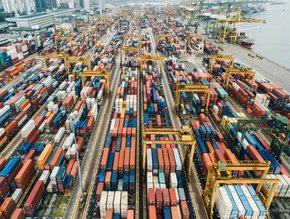Sedex: Harnessing data to drive gender equality

Women play a vital role in global supply chains, making up nearly half (43%) of workforces. Despite this, and despite economic and social equality progress made around the world, women still experience inequality at work. Gender-based discrimination remains an issue, with many women experiencing sexual harassment, higher job insecurity, and lower pay compared to their male counterparts. Sedex research reveals that, globally, women make up just 31% of supervisor roles and only 27% of management-level positions in supply chains.
Businesses that drive greater equality across their own organisations and supply chains can access significant benefits. For example, research has shown that more gender-diverse companies are 21% more likely to enjoy above-average profitability. Diverse workforces, with more varied perspectives and approaches, are more likely to make better business decisions. Companies that actively support all workers, and particularly women, benefit from a resilient, healthy, workforce that retains skilled staff.
Gender equality also features highly in the United Nations’ Sustainable Development Goals (SDG 5) and businesses play a crucial role in accomplishing this by providing decent work and employment opportunities. By adopting all the tools at their disposal to improve gender equality, companies can drive positive change for workers, communities and businesses.
It’s all about the data
Data is a powerful tool for driving change. Accurate gender-disaggregated data (data separated into male and female sets) underscores every effort to improve equality at work. It’s essential that organisations gather and separate data from across their supply chains, to build a comprehensive picture of women's working situations and draw insights into where the deepest inequalities lie.
These insights help businesses understand issues and prioritise where they focus their efforts and resources to drive change. For example, a company may choose to focus on suppliers or industries with the highest proportions of female workers, or where the gaps between male and female workers are highest.
Simply capturing information about male and female workers at worksites provides crucial insight by showing where female workers exist within a company’s supply chain. Key areas to capture gender-disaggregated data include:
- Management and supervisor positions: To understand gender disparities in leadership roles.
- Wages: To analyse gender pay gaps.
- Contract types: To understand whether female workers are more likely to be in insecure employment, e.g. on temporary or zero-hours contracts.
- Absence rates: To investigate whether there are differences between male and female workers’ absence rates.
- Worker committees: To understand whether women are adequately represented on worker committees and whether worker committee members reflect the demographics of the wider workforce.
High-level risk assessment is also a valuable way to guide a company’s efforts, by detecting the sectors and countries where female workers are at the greatest risk of discrimination and exploitation.
It is important to remember that women are typically more vulnerable than men, so female workers are often more susceptible to many of the risks a risk assessment identifies – including forced labour, workplace injury, and insecure employment. This vulnerability interacts with other characteristics, including race, nationality and age. Data on these demographics helps to identify particularly vulnerable workers, such as young, female, migrant workers.
Identifying power imbalances
The workplace roles available to women are strongly influenced by long-held gender stereotypes and cultural perceptions of men and women’s work, for example, that men are better suited to leadership or more technical roles. Women are less likely to reach senior positions, with our data finding that only 38% of promotions last year were given to women.
These typecasts and the gender gaps in senior management compound power imbalances between men and women at work, making women more vulnerable to workplace violence and harassment.
Data enables us to see exactly where these power imbalances exist and can highlight where the risks of gender-based harassment are highest within an organisation or supply chain. Presenting business leaders with supporting data that illuminates these issues provides not just insight, but also a nudge to take action.
Next steps
Once gender-disaggregated data has been collected, businesses can build a true picture of gender diversity, equality and inclusion across their organisation and supply network.
Companies can then identify their priority focus, developing their approach and targets to improve equality in these areas. Activities could include anything from new employment policies or training for suppliers to supporting on-site creches at worksites. Businesses can also enlist support for their efforts by engaging with a relevant consultancy service, such as Sedex’s.
Continuing to gather and update gender-disaggregated data, using a centralised platform, empowers companies to measure the impact of their activities and their progress towards gender equality targets. For example, businesses can see whether absence rates among female workers are moving closer to that of male workers, or whether the proportion of female supervisors is growing.
It’s only with data that companies can track and demonstrate progress towards gender equality. In using this data effectively, organisations help to develop more equal workplaces that can boost women’s economic empowerment, bring business advantages, and support fairer communities for all.






